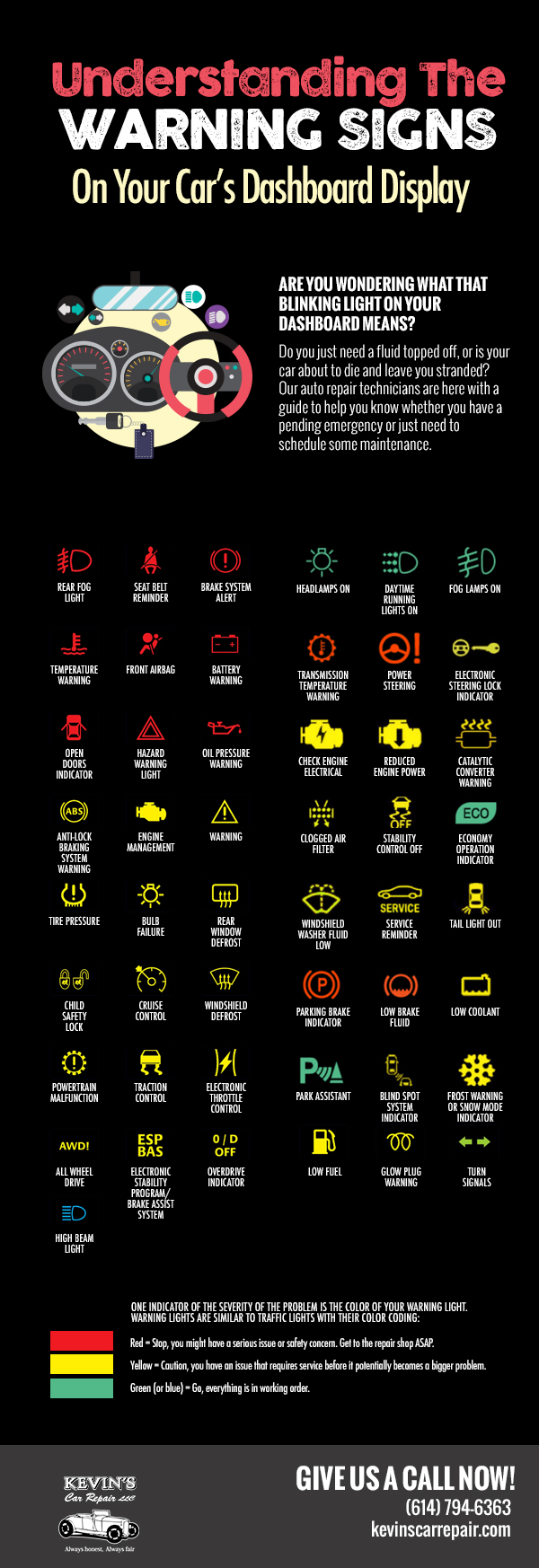Assessing Your Cars And Truck'S Warning Indicators: What They Really Communicate
Assessing Your Cars And Truck'S Warning Indicators: What They Really Communicate
Blog Article
Web Content Author-Samuelsen Gilbert
When you're behind the wheel, those glowing caution lights on your dashboard can be a little bit complicated. Do you recognize what they're trying to inform you concerning your vehicle's wellness? Understanding the relevance of these lights is crucial for your safety and the long life of your car. So, the next time among those lights appears, would not you want to decipher its message accurately and take the needed steps to address it?
Common Warning Lighting and Interpretations
Recognize common caution lights in your auto and recognize their meanings to make sure secure driving.
The most common caution lights consist of the check engine light, which indicates problems with the engine or emissions system. If this light begins, it's vital to have your vehicle inspected immediately.
The oil stress cautioning light suggests reduced oil stress, needing instant interest to stop engine damages.
A flashing battery light could suggest a malfunctioning charging system, potentially leaving you stranded otherwise dealt with.
The tire pressure monitoring system (TPMS) light signals you to low tire pressure, influencing vehicle security and gas performance. Neglecting this could lead to risky driving problems.
The abdominal light indicates a problem with the anti-lock braking system, endangering your capability to stop swiftly in emergencies.
Finally, the coolant temperature level cautioning light warns of engine overheating, which can cause severe damages otherwise fixed swiftly.
Understanding these common warning lights will certainly assist you attend to problems without delay and keep secure driving problems.
Value of Prompt Focus
Understanding the usual caution lights in your auto is only the initial step; the importance of immediately addressing these cautions can't be highlighted sufficient to ensure your safety on the road.
When a warning light brightens on your dashboard, it's your car's method of connecting a prospective issue that needs attention. Disregarding https://brake-service-near-me29406.howeweb.com/32712982/exceptionally-hassle-free-mobile-auto-describing-services-not-only-conserve-you-money-and-time-but-also-boost-your-vehicle-s-longevity-find-how-they-can-transform-your-routine can cause more serious troubles in the future, jeopardizing your safety and potentially costing you much more in repairs.
Motivate interest to cautioning lights can prevent malfunctions and mishaps. For instance, a blinking check engine light could suggest a misfire that, if left neglected, can create damages to the catalytic converter. Addressing this promptly can conserve you from an expensive repair service.
In a similar way, a brake system advising light might signify low brake fluid or worn brake pads, essential components for your safety and security when driving.
DIY Troubleshooting Tips
If you see a caution light on your dashboard, there are a couple of DIY fixing suggestions you can attempt before seeking expert aid.
The very first step is to consult your cars and truck's manual to comprehend what the details warning light indicates. Sometimes https://www.pymnts.com/earnings/2022/b2b-customers-seek-digital-tools-when-buying-auto-parts/ can be as easy as a loosened gas cap activating the check engine light. Tightening up the gas cap may deal with the problem.
One more usual problem is a reduced battery, which can activate numerous warning lights. Inspecting the battery links for deterioration and guaranteeing they're safe might deal with the trouble.
If a caution light continues, you can try resetting it by detaching the cars and truck's battery for a few minutes and after that reconnecting it. Furthermore, examining your automobile's fluid degrees, such as oil, coolant, and brake liquid, can assist troubleshoot advising lights associated with these systems.
Conclusion
In conclusion, recognizing your vehicle's warning lights is crucial for keeping your automobile running smoothly and safely. By immediately addressing these alerts and understanding what they indicate, you can avoid expensive fixings and potential failures.
Bear in mind to consult your car's manual for particular information on each cautioning light and do something about it appropriately to ensure a hassle-free driving experience.
Keep notified, stay risk-free when driving!
